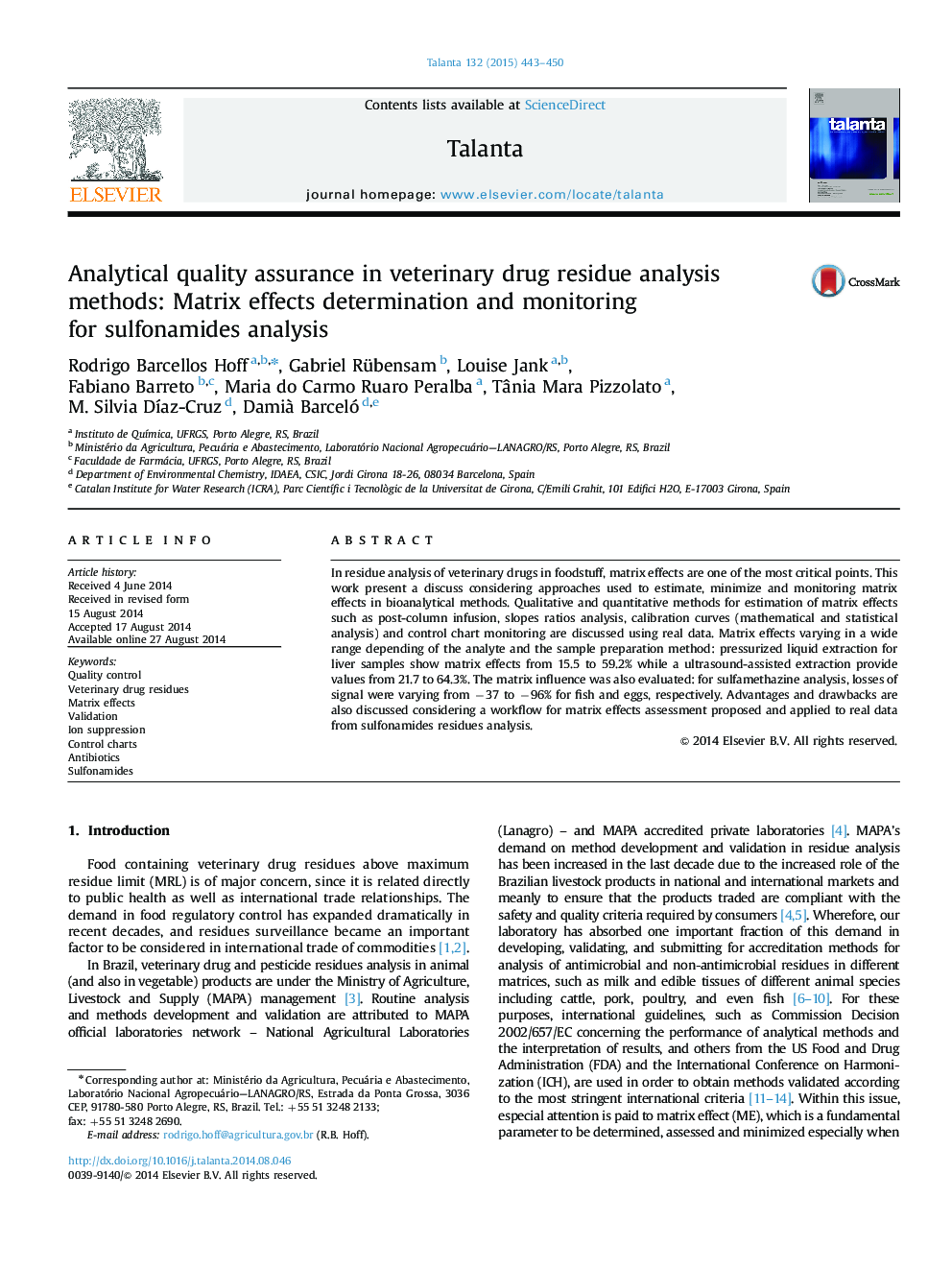| Article ID | Journal | Published Year | Pages | File Type |
|---|---|---|---|---|
| 1242038 | Talanta | 2015 | 8 Pages |
•Strategies for matrix effects assessment in mass spectrometry methods are discussed.•Approaches for matrix effects estimations are compared using real analytical data.•Advantages and drawbacks of each strategy were discussed.•A walkthrough guide for matrix effects assessment is proposed.•Tools for estimation, minimization and monitoring of matrix effects are demonstrated.
In residue analysis of veterinary drugs in foodstuff, matrix effects are one of the most critical points. This work present a discuss considering approaches used to estimate, minimize and monitoring matrix effects in bioanalytical methods. Qualitative and quantitative methods for estimation of matrix effects such as post-column infusion, slopes ratios analysis, calibration curves (mathematical and statistical analysis) and control chart monitoring are discussed using real data. Matrix effects varying in a wide range depending of the analyte and the sample preparation method: pressurized liquid extraction for liver samples show matrix effects from 15.5 to 59.2% while a ultrasound-assisted extraction provide values from 21.7 to 64.3%. The matrix influence was also evaluated: for sulfamethazine analysis, losses of signal were varying from −37 to −96% for fish and eggs, respectively. Advantages and drawbacks are also discussed considering a workflow for matrix effects assessment proposed and applied to real data from sulfonamides residues analysis.
Graphical abstractFigure optionsDownload full-size imageDownload as PowerPoint slide
